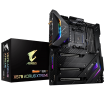I'll be honest and say I get about 10% of that

Would you be willing to make a recommendation?
I'm sure you know how Intel claims they're on "9th generation" Core CPUs now.
Well, architecturally it's basically still same old 6th gen Skylake from 2016.
"7th" gen Kaby Lake was only slight clock speed tweak and should have been like 6th gen 6750K/6770K or something like that.
And 8th gen Coffee on their pants, err on Lake is nothing more than two extra cores of same architecture, just like "9th" gen.
Maybe that 7th gen designation could have been justified for finally improving from core count reached only
12 years earlier.
And while officially needing new motherboards, that was nothing but artificial limitation to force people into buying new motherboards for making Intel richer:
https://www.techpowerup.com/250109/...0-ghz-overclock-on-a-z170-chipset-motherboard
That's Intel's vision of consumer friendliness for you...
And Intel's this winter's "10th" gen Comedy... Comet Lake coming into shops maybe even for spring is another re-spin of Skylake.
This time instead of just making it incompatible at BIOS level socket changes physically to one with higher contact/pin count.
Probably because of already 8 core 9900K having more like 200W honest max power consumption and 10 such cores makes it 250W.
Then unless Intel wants to be left out of DDR5 memory train they'll have to make another new socket in 2021.
Possibly for another rebranding of same old Skylake on same old 14nm+++++++ manufacturing process.
Because it looks like Intel's 10nm manufacturing process won't ever produce high end desktop CPU.
In short best you can ever get for current Intel platform will be 8 core/16 thread 9900K.
While AMD's AM4 is already getting 16 core/32 thread Zen2 released soon.
And by updating BIOS X570 motherboards will be compatible with next year's Zen3 architecture Ryzens.
Which improves performance and should make nice priced upgrade option around 2021-22, because AMD lowers prices of old models.
Good news in X570 motherboards is that unlike in B450/X470 boards you don't need to pay luxury for getting competent CPU VRM. (Voltage Regulation Module)
While Asrock has whole lower end using outdated design VRM made from super cheap components and MSI just copypasted old B450 board VRM, Asus and Gigabyte learned from their scam level VRMs.
Even the cheapest Asus X570 board, Prime X570-P has modern VRM easily good for coming 16 core CPU.
Also Gigabyte X570 Aorus Elite has good modern design and efficiency VRM.
Besides being pretty darn well featured and with some nice design choises.
Unlike in most X570 boards Gigabyte put X570 chipset cooler farther from graphics card's slot and heat pushed out by GPUs.
That should help in keeping fan's noise down besides slowing down wear when it doesn't have to run as fast.
It has Intel NIC, which are considered very reliable and well supported.
Also it has two USB3 headers (four USB-As) and one USB-C header (one USB-C) for front connectors of the case.
Expansion card slots are well positioned and it has one x4 slot and two x1 slots which are completely free of electrical or physical conflicts with graphics card's slot.
With x4 slot capable to taking M.2 NVMe drive using
cheap adapters and x1 PCIe v4 slot having enough bandwidth for 10Gbit NIC.
And there's no worries about messing BIOS update, because you can overwrite BIOS from USB stick without PC able to power on, or even without whole CPU.
As negative Gigabyte should have left out that IO-"shroud" fashion trash, which only lowers airflow around VRM heatsink.
But at least that garbage can be removed easily by experienced user knowing what to do.
And basic level SOC (non-cores part of CPU) VRM wouldn't be that great for APU with integrated GPU. But normal Ryzens won't ever make it work hard.
 ). That's 'cos I bought sensibly last time but that was also when I knew all the ins and outs of the tech which has now slipped me by.
). That's 'cos I bought sensibly last time but that was also when I knew all the ins and outs of the tech which has now slipped me by.  !
!
 ). That's 'cos I bought sensibly last time but that was also when I knew all the ins and outs of the tech which has now slipped me by.
). That's 'cos I bought sensibly last time but that was also when I knew all the ins and outs of the tech which has now slipped me by.  !
!


 - we're not all lowered-suspension bass-pumping huge-spoiler corsa drivers... ah well
- we're not all lowered-suspension bass-pumping huge-spoiler corsa drivers... ah well 


